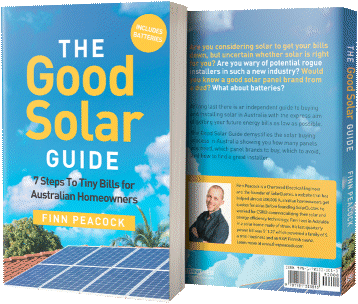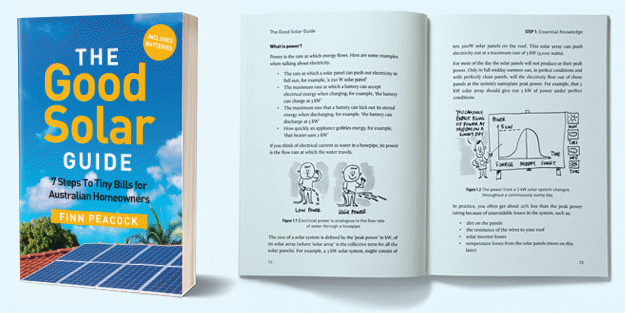
Plans to install the first public EV charging stations on Queensland’s Capricorn Coast have come to a screeching halt, thanks to a Channel 7 beat up linking Indonesian nickel mining to EVs without evidence.
The Capricorn Coast is a stretch of coastline in Central Queensland between the mouth of Water Park Creek and the mouth of the Fitzroy River – approximately 75 kilometres in length. It’s one of the last coastal regions in Queensland without public EV charging infrastructure according to Livingstone Shire Council.
At the beginning of April this year, Council announced it would proceed with making public EV chargers available in Yeppoon by partnering with a supplier that would install, operate, and maintain the stations. The supplier would assume all costs and pay Council an annual license fee.
“Council recognises the demand for EV charging infrastructure and the benefits it will bring to our community, including increased tourism, local business support,” Mayor Adam Belot said at the time. “This initiative reflects our dedication to sustainable development in and enhancing regional opportunities.”
It seemed like everyone would be a winner – but …
Brakes Slammed On EV Charger Plans
A lot can change in two weeks, and it certainly did in this case. Council has decided to pause progress on the project, citing the need for further consideration of environmental, ethical, and economic factors.
The source of this change of heart? Mayor Belot.
A Notice of Motion from Mayor Belot tabled at Council’s Ordinary Meeting this week expressed concerns about the environmental and social impacts of EV battery production; apparently triggered by a 7 News Spotlight story in early April on “the deadly side of electric vehicles sold in Australia.”
“Global demand for cheap, Chinese-made electric vehicle batteries has brought about unprecedented demand for cheap, dirty Indonesian nickel,” states the Spotlight report.
Aside from the fact the majority of nickel produced globally is used in the manufacture of stainless steel and other alloys, not all electric vehicles use nickel in energy storage. For example, those with Lithium Iron Phosphate (LFP/LiFePo4) batteries such as the BYD Atto 3 and many others.
Among those that do and according to a TechAU critique of the report, Spotlight failed to identify any EV maker using ‘dirty nickel’ from Indonesia. Furthermore, TechAU said the nickel coming out of Indonesia would be unlikely to meet the standard EV battery manufacturers require.
The TechAU dissection of the Spotlight report accompanied Mayor Belot’s motion in the agenda for the Livingstone Shire Council meeting on April 15. In his Notice of Motion (page 25) that also contained several other concerns, Mayor Belot said:
“Council must consider if the EV push may be more about ideology and industry profit than practical benefits for everyday Australians.”
The motion:
“That Council suspend any further action on advancing Electric Vehicle Charging Station until further notice as a result of concerns identified in recent media”.
The motion passed – 4 for and 3 against.
“There are still significant ethical questions around the mining practices involved in battery materials, and not all industry claims are supported by independent, peer-reviewed evidence,” Mayor Belot said in follow-up commentary. “I believe it’s responsible to pause and ensure that any future investment in this space meets the highest environmental, social, and governance standards.”
Good Intentions, But …
Mayor Belot questioning such issues is a positive thing, but it could be argued his application of the precautionary principle in this situation was (way?) over the top and misplaced. It would be a different story if Livingstone Shire Council was hesitating on purchasing electric vehicles for its own use, but for Council to delay much-needed public EV charging infrastructure over such concerns is odd to say the least.
It’s also clear some of the Spotlight report’s claims were not supported by independent, peer-reviewed evidence; yet it seems it was enough to throw a spanner in the works.
So, Capricorn Coast residents with electric vehicles will need to make do with home EV chargers for the foreseeable future1 (or travel further afield for top-ups), which will be cheaper anyway; especially for EV owners who have solar panels on their homes. But for tourists and those passing through the region, the need for some extra trip planning will remain – see a map of public charging stations across Australia here.
Footnotes
- Although related regulations in Queensland for hard-wired home chargers can be a pain in the neck. ↩

 RSS - Posts
RSS - Posts



The “Electric Viking” from Youtube challenged the Channel 7 interviewer in regards to “dirty Indonesian nickel” by pointing out that most EVs use LiFeP batteries which do not use any nickel and any labour problems at Indonesian nickel mines have definitely nothing to do with the benefits EVs will bring in reducing air pollution.
The ICE-producing companies are fighting a losing war with anti-EV propaganda and lobbying. The US, Korea, Japan and the EU slept when it came to battery research despite a known 2035 ban on ICE manuafacture.
All those countries have lost the Chinese market with 23 million cars as the CCP decided to reduce oil imports. Foreign and local ICEs there face a financial penalty on registration and now have also lost the US market due to tariffs.
China invested billions into research for EV batteries and now BYD and CATL manufacture the best batteries – a major cost item in EVs.
Personally, I have no sympathy for the established Automotive manufacturers. I visited China in 1978, before the Gang of 4 had the second revolution. Even then the gifted students were singled out & sent to specialist schools, whether bright, artistic or showing signs of athletic ability. When you have a pool of students that large, then let them perform, of course one will see huge developments.
Fast forward 50 years, & look at a company like BYD that has 150,000 engineers, then wonder why they are leading the world. I do not know how many engineers the established manufacturers employ, but I doubt ALL the Western Automotive manufacturers together would employ that many engineers?
10 years ago the Chinese vehicles were klunky, but certainly not now. The quality of vehicles built mainly by robot is exceptional. Robots do not place parts incorrectly, or chip paint.
Even Tesla has been left behind. It seems the Chinese software is superior.
Yes, interesting to note that Liam Bartlett was once a paid for consultant with Shell Petroleum. So, hard to say if Liam was impartial to story reporting. Never mind the fact that Ch7’s majority stake owner – Kerry Stokes has a 30% vested interest in fossil fuels, so, as media owner, he would have editorial control of the story’s bashing of EVs.
Furthermore, regarding nickel’s use. (roughly 3.7 million tonnes globally annually).
1. 70% is used for stainless steel.
2. Up to 26% used for alloys and forges
3. The remaining 4% – used for other, which includes EV batteries but not all EV batteries use nickel. Even the NiMH rechargeable batteries have nickel (commonly used in AA/AAA format).
Indonesia has the lion’s share of reserves – about 50 million tons and mines about 2.2 million tons. So, in less than 25 years, Indonesia will run out. By then, we will have moved on with battery technology. Nature will eventually restore the damage once mining abandons the area.